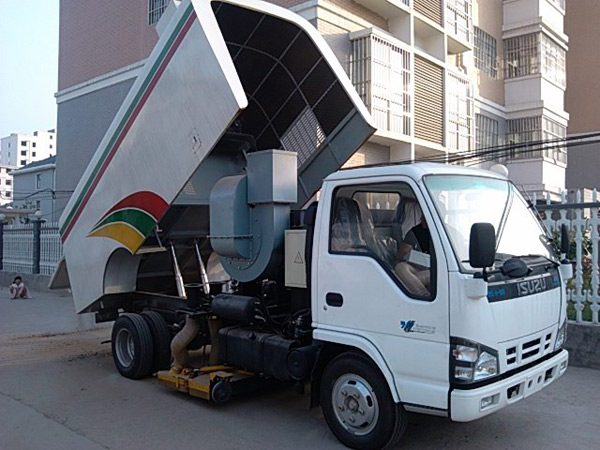Starting with a new car, the first thing we have to go through is the running-in period, then the use and maintenance. It can be said that this is the stage that all vehicles need to pass, and the pure suction type sweeping vehicle is not included. So today we have a chat about the running, use and maintenance of the pure suction sweeper. Run-in period The running-in period of a pure suction sweeper is generally 20 hours. During this period, the secondary engine working speed cannot exceed 1,800 rpm. At the same time, attention must be paid to avoiding the overspeeding of the engine and drastically. Acceleration or deceleration. In addition, attention must also be paid to observing whether there are any abnormalities in various parts of the body of a pure suction sweeper, such as abnormal noise, vibration, and water leakage. During the running-in period, the pure suction type sweeping vehicle is also prone to the slippage phenomenon of the fan drive belt, the hydraulic pump drive belt, and the air compressor drive belt, so it needs to pay attention. Electric control box switch operation and the work of various instruments should also pay attention. After the sweeper sub engine is completed, pay attention to cleaning the engine air filter element and replacing the secondary engine oil and oil. For the faults and problems that occur during the running-in process, they must also be resolved in a timely manner. Here, we must remind everyone that for the running-in of the pure suction-type sweeper-specific working device, the manufacturer can be required to complete it before leaving the factory or request it to The operator performs break-in training. Precautions The pure suction type sweeper should check the tightening of the tire nut, each fastener nut, and the pin shaft before exiting the car to see if there are loose and other anomalies, whether the tire pressure and appearance are normal, and whether the edge rubber under the suction mouth is Wear; whether the seal of the waste container and fan interface is intact; whether the vehicle has oil leakage or water leakage; whether the two engine fuel, coolant, oil level, and brake fluid are missing, if not added in time; Start the main engine and listen to its normal operation; check whether the car gauges, lights, service brakes and hand brake lights are working properly; start the auxiliary engine and listen to its work; check the operation dashboard and indicator lights, fan drive belts, and hydraulic pumps. And air compressor drive belt conditions. After the inspection, all parts work normally, the bins are in the return position, the suction cups are in the raised state, and the electric outlets are recovered. Each electric control switch is in the parking position and the auxiliary engine is off.
Elevator Compensation Chain, Elevator Compensating Chain, Lift Compensation Chain, Lift Compensating Chain
OTIS Elevator Compensation
Chain, Thyssen Elevator Compensation Chain, KONE Elevator
Compensation Chain, GiantKONE Elevator Compensation Chain, ThyssenKrupp Elevator
Compensation Chain, Schindler Elevator Compensation Chain, XJ Schindler Elevator
Compensation Chain, Xizi OTIS Elevator Compensation Chain, Mitsubishi Elevator Compensation
Chain, Shanghai Mitsubishi Elevator Compensation Chain, Fujitec Elevator Compensation
Chain, Hitachi Elevator Compensation Chain, Toshiba Elevator Compensation Chain,
Hyundai Elevator Compensation Chain, LG Elevator Compensation Chain, Sigma Elevator
Compensation Chain, Express Elevator Compensation Chain, GUANGRI Elevator Compensation
Chain, FUJI Elevator Compensation Chain, BLT Elevator Compensation Chain, CANNY
Elevator Compensation Chain, SJEC Elevator Compensation Chain, KOYO Elevator Compensation
Chain, IFE Elevator Compensation Chain
Elevator Compensation Chain Elevator Compensation Chain, Elevator Compensating Chain, Lift Compensation Chain, Lift Compensating Chain CEP Elevator Products ( China ) Co., Ltd. , https://www.elevatorcomponent.nl